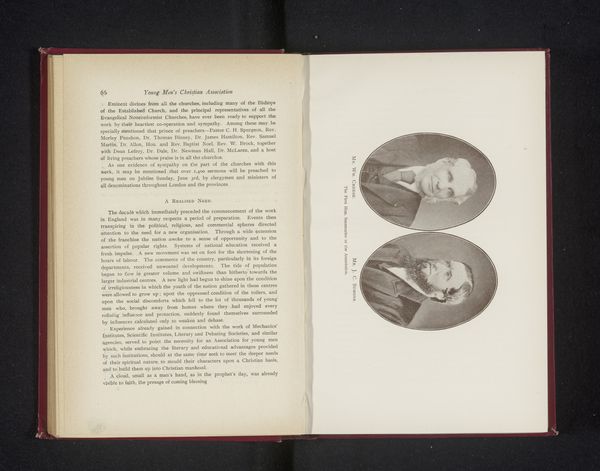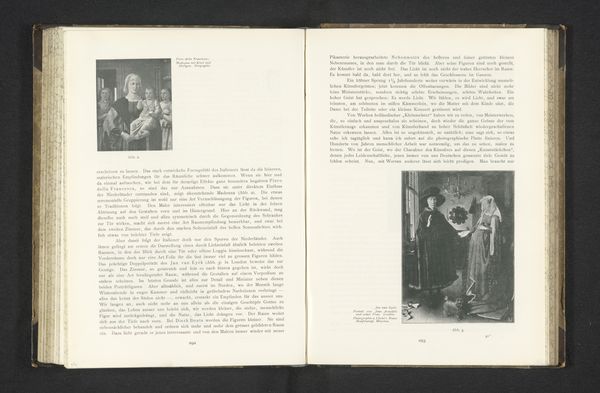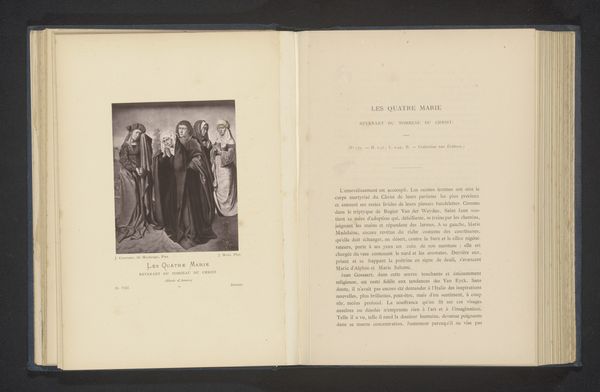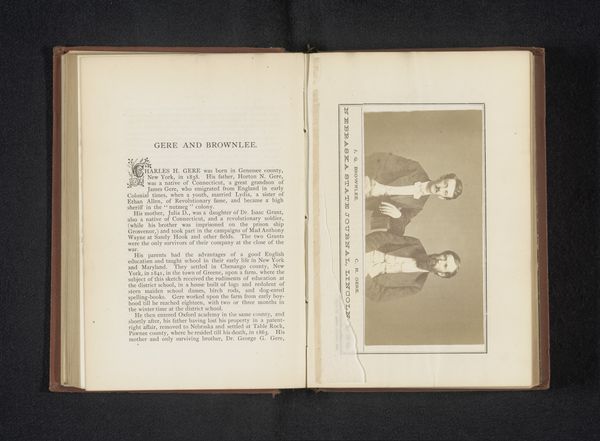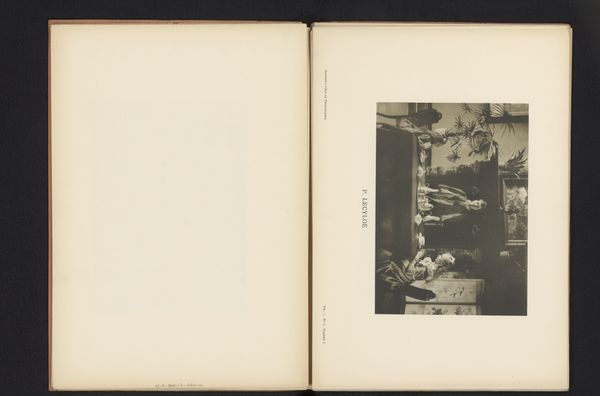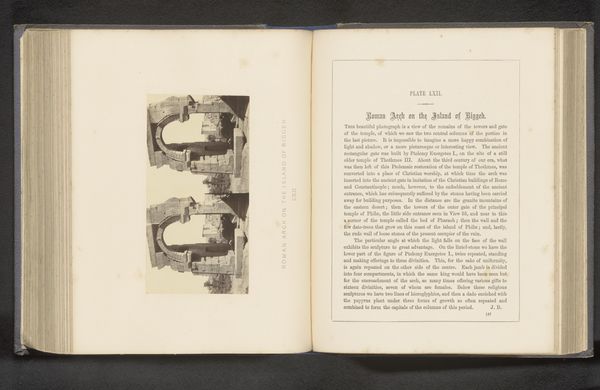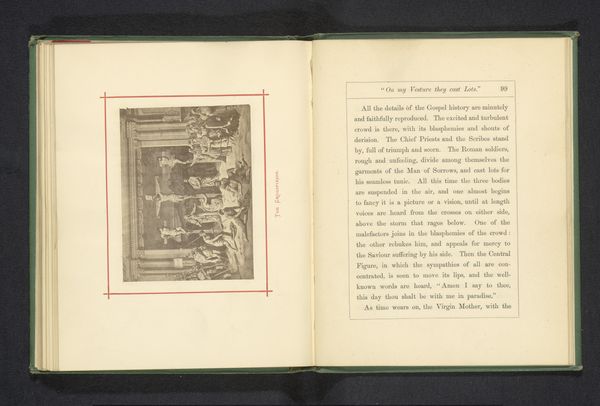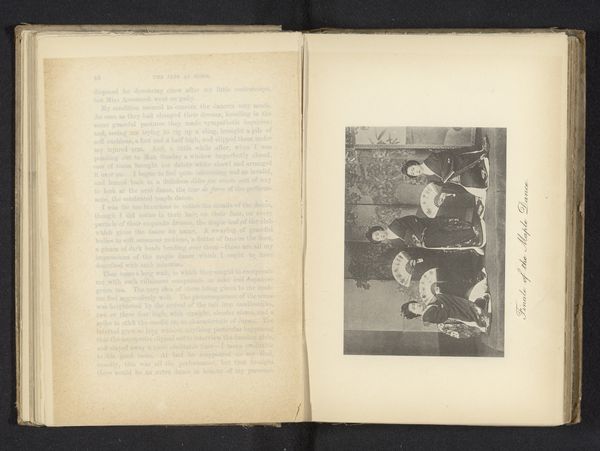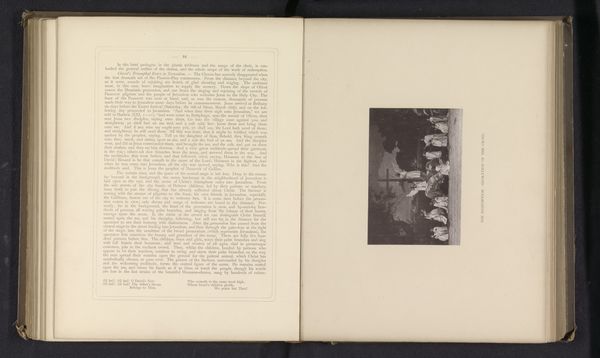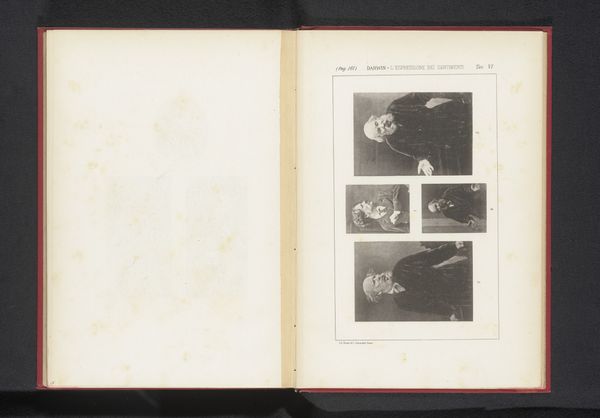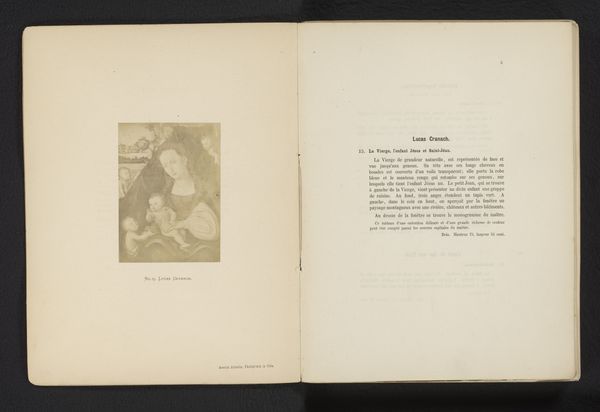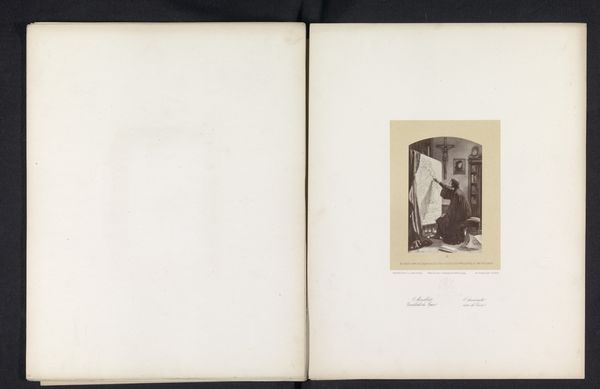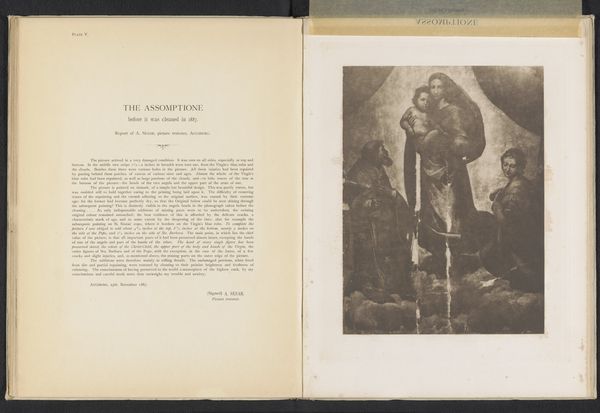
print, textile, paper, photography, collotype
# print
#
textile
#
paper
#
11_renaissance
#
photography
#
collotype
Dimensions: height 78 mm, width 116 mm
Copyright: Rijks Museum: Open Domain
Curator: This image presents a collotype print, found within a publication from before 1877. The reproduction shows the heads of Christ and the Virgin Mary, after Quinten Massijs. The source print medium seems to be textile adhered to paper. What catches your eye first about this pairing? Editor: The symmetry is immediately striking—the mirroring in composition, even the parallel upward gaze. It suggests a relationship based on shared experience, yet they are isolated, contained within their own frames. It feels intentionally crafted to elicit comparison rather than connection, which is strange, but, also a deliberate way to explore power dynamics in Renaissance society. Curator: Indeed. The halos radiate, but they don't connect. Each figure is intensely individualized. The use of textiles in the original printing may point to themes of domesticity and labor, reflecting on women’s roles in that period. Quinten Massijs' work was groundbreaking at the time because he brought about great sophistication by blending meticulous detail and genuine feeling into the depiction of religious narratives. Editor: The halo iconography immediately anchors these images within a familiar Western visual vocabulary. Radiating lines, a universal symbol for divinity or enlightenment, create an almost overwhelming sense of importance for both. The downward, praying gesture of Mary feels passive in contrast with the direct gaze of Christ, hinting at pre-assigned roles that affect our contemporary interpretation of feminine expression and autonomy. The reproduction’s photographic element almost lends this a voyeuristic feel. Curator: Considering the date of the reproduction, such interpretations have always shifted through art historical eras. Its presence in print culture also invites analysis. By dissecting these holy heads, one questions conventional narratives associated with the Holy Family. It speaks to evolving attitudes toward women within patriarchal religious systems as art transforms alongside social and political views. Editor: It's a compelling reminder that even within sacred iconography, subtle gestures and deliberate framings can hold and expose complex undercurrents of gender, power, and humanity. Curator: Precisely; this layering is what prompts re-evaluation in historical dialogue through art. Editor: This has really made me think about how persistent symbols, even when divorced from their original context, can still carry incredible emotional weight.
Comments
No comments
Be the first to comment and join the conversation on the ultimate creative platform.
